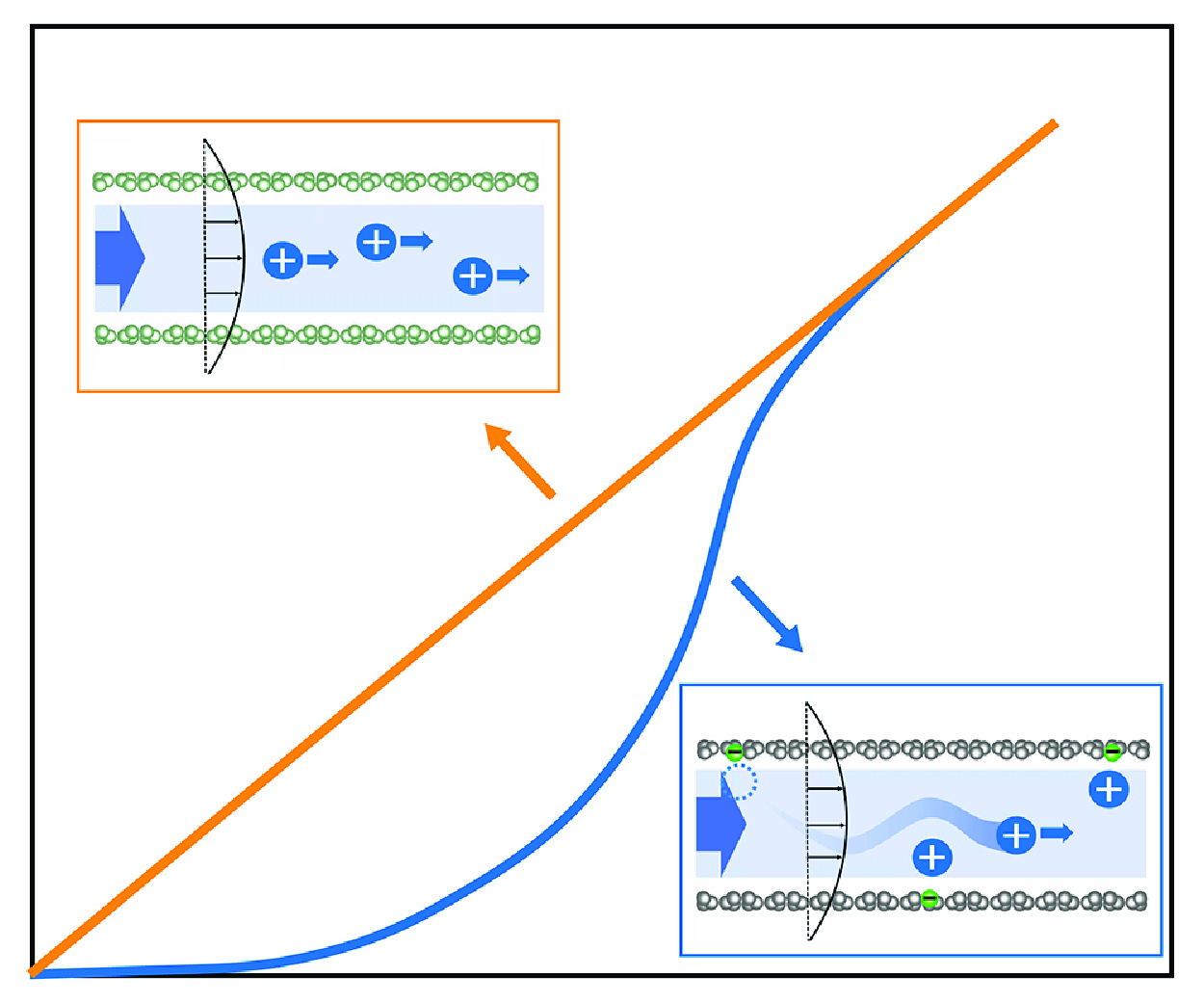No CrossRef data available.
Published online by Cambridge University Press: 03 June 2025

Numerous studies showed that the flow and transport phenomena in angstrom channels are different from existing understandings. In this work, we investigate the electrokinetic phenomena in a charged angstrom channel, including homogeneous and heterogeneous charge distributions at the wall to mimic the charging mechanisms of electrified metal-like surfaces and deprotonated dielectric surfaces, respectively. Our results show that both the streaming current and the flow velocity linearly increase as the applied pressure increases in a homogeneously charged system. However, in a heterogeneously charged system, the streaming current is activated only when the applied pressure exceeds a critical threshold. This behaviour arises from the strong Coulomb interactions between counterions and the surface charge, manifesting as an obvious nonlinear feature. The dissociation of counterions from the surface charge may not only cause pressure-dependent streaming conductance but also reduce the friction coefficient of the system, thus the flow resistance, when the system friction is governed by the bound ions. We found that such pressure-dependent streaming conductance gradually weakens as the channel size increases and reaches the regime of classical nanofluidic theories. Taking one-dimensional non-equilibrium statistics and Markov chains for the sequence evolution of bound-ion dissociation, our theory can well explain the pressure-dependent streaming conductance and water permeability in angstrom charged channels. Voltage-driven nonlinear ionic transport and electro-osmosis were also observed in heterogeneously charged systems. Our findings will be helpful for understanding the ionic transport in angstrom-scale channels and possibly useful in ion separations.